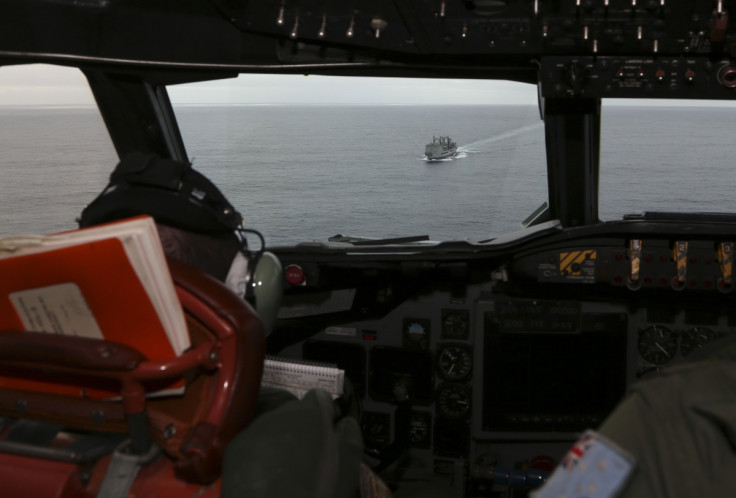Malaysia Airlines MH370: Last Partial Ping Sent by Aircraft Unexplained, say Experts

In one of the many puzzles surrounding the MH370 flight, one more was added. Investigators studying the final path taken by the jet disclosed that the plane sent an incomplete ping just eight minutes after the last of hourly pings was transmitted to the satellite.
The final signal remains unexplained at the moment as experts are reviewing what it could possibly mean.
After the plane vanished from radars, it kept sending hourly pings for six hours which meant that the aircraft was flying for that period of time, and the signals also helped estimate the possible path taken by the aircraft.
The hourly "handshakes" are automated communications between the plane and satellite, and cannot be turned off by the pilots. The last complete handshake from the jet came at about 00:11 GMT, but the partial ping was received at 00:19 GMT.
The next handshake signal from the plane was expected at about 01:11 GMT, which did not come.
Senior Vice President at Inmarsat Chris McLaughlin told WSJ that the last partial ping "originates with the aircraft for reasons not understood."
McLaughlin said that the company is analysing the incomplete ping which could be understood as a "failed login" or even a "potential attempt by the system [aboard the aircraft] to reset itself."
He further added that the partial ping could have been triggered by multiple factors, but the pilots initiating it, is not one of them.
"We're not looking at this [partial ping] as someone trying to turn on the system and communicate," he noted.
The UK Air Accidents Investigation Branch confirmed in a statement that there was "evidence of a partial handshake between the aircraft and ground station" after the final routine handshake was received.
However, the statement said that "at this time this transmission isn't understood and is subject to further ongoing work."
Citing experts investigating the incident, Malaysian Defence Minister Hishammuddin Hussein said at a news conference that the signals after the partial ping likely ceased because the jet might have run out of fuel, crashing into the ocean. He opined that the timing was "consistent with the maximum endurance of the aircraft."
His office released additional information on the analysis that was used to conclude that the airliner had crashed in the southern Indian Ocean.
It is not clear yet if the Chinese government has received all the data that was requested from the Malaysian authorities.
"We are highly concerned with Malaysia's conclusion, and have demanded full information and the evidence that supports the conclusion," Hong Lei, spokesman for Chinese foreign ministry, said at a press conference.
New analysis from the satellites is used by the international investigative teams to scale down the search area from millions of sq miles to only about 470,000 nautical sq miles.
The search for possible debris spotted by the satellites resumed in the southern Indian Ocean corridor after the weather improved.
Australia sent 12 aircrafts to scan the site, while the Chinese Xue Long or "Snow Dragon" vessel was expected to reach the area today.
© Copyright IBTimes 2025. All rights reserved.




















